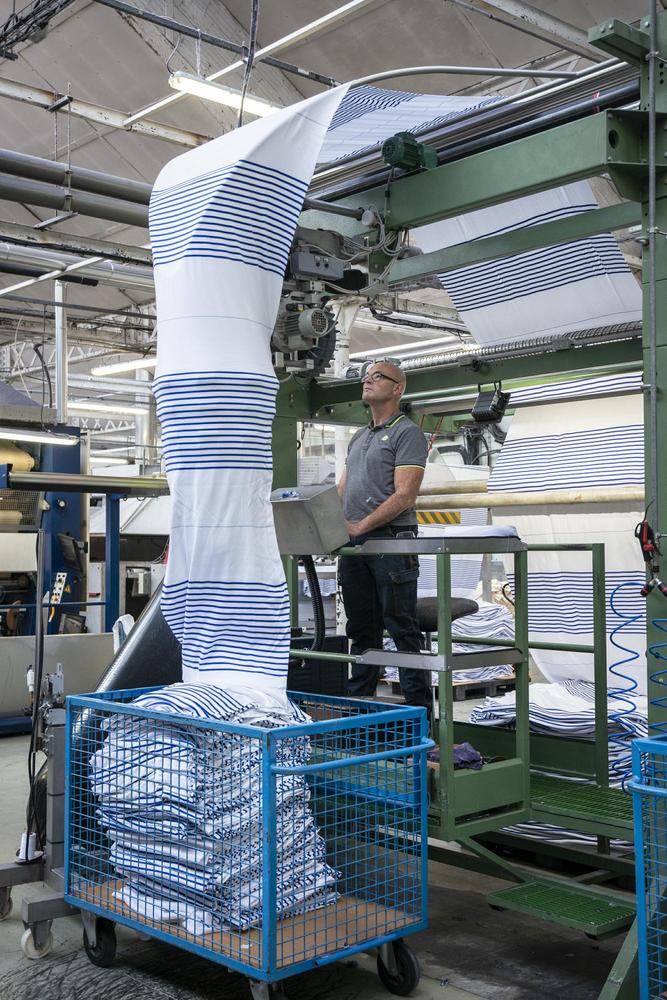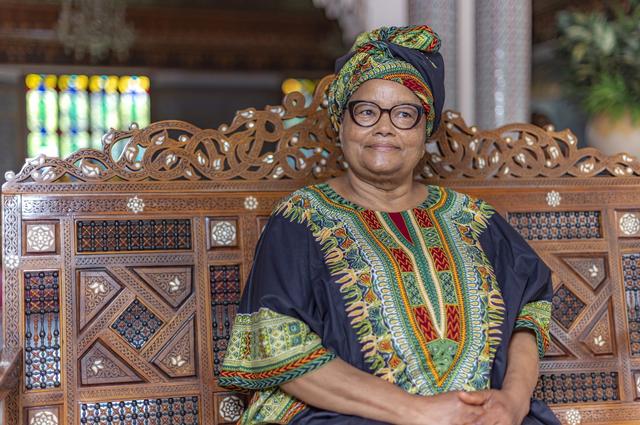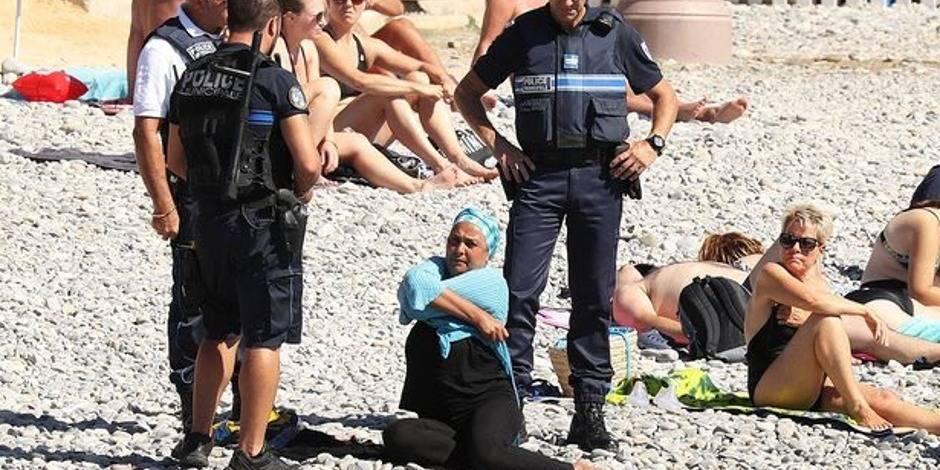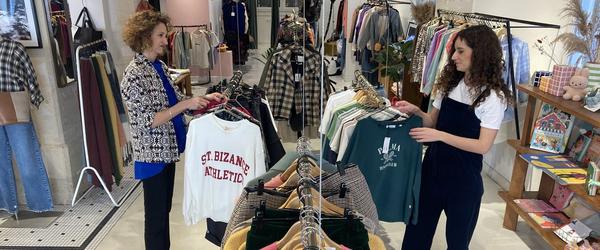Armor Lux: "We are Gauls who resist the invader"
La scène pourrait se passer en Bulgarie, en Tunisie, ou même en Inde. Dans une usine éclairée par de puissantes lumières, une centaine de couturières s'activent sur leurs machines. Elles assemblent dans le brouhaha mécanique les pièces du produit phare de l'entreprise : des marinières, ces iconiques tricots blancs rayés de bandes bleues. Portées à l'origine par les quartiers-maîtres et les matelots de la Marine nationale, ces tenues de travail ont connu une seconde jeunesse dans le milieu de la mode à partir des années 80 : Jean Paul Gaultier la réinvente et Etienne Daho, photographié par Pierre et Gilles, arbore la marinière comme un emblème nouvelle vague sur la pochette de l'album La Notte, La Notte (1984). Elle s'éclipse un moment en dehors des côtes bretonnes, puis revient chez les créateurs au début des années 2010. Imitée, transformée, détournée, la marinière originale, elle, est toujours produite aujourd'hui là où elle l'était au siècle dernier : à Quimper, dans le sud du Finistère. Et fait la fierté de l'entreprise Armor Lux, grosse PME de plus de 500 employés.
Flying saucer
Because despite globalization, competition from textile workshops in developing countries and relocations, the company, which is blowing its 80 candles this year, has managed to preserve 40 % of its production within its factories at the end of Brittany . "Textiles in Quimper is not so easy, believe me. It was a wish of its current leaders, eager to keep the know-how where it was born. We sometimes like ourselves to describe ourselves as Gauls who resist the invader again and always, ”says one of the employees. We quickly understand it when we question the employees, the first reason why we always make clothes at the end of Finistère is simple: it is a way to claim an identity. From the highest to the lowest salary, all the employees of Armor Lux evoke, to justify their work, the "defense of the Breton heritage". One of the oldest employees, thirty-seven years of business, remembers: "When we were younger at school, he had marked on the walls:" Forbidden to speak Breton and spit on the ground. "" To make Breton clothes again in Quimper today is a pride for us. ”
The founder of Armor Lux, however, is nothing Breton originally: it is a Swiss entrepreneur, Walter Hubacher, who, in 1938, decided to found the brand and install his manufacturing workshops in the Finistère prefecture . Near the station, he turned his first knitting machine for seaweed and underwear. In one of the two factories that the group still has, the big knitting knitting flying saucer is still there. Proudly preserved by Christian d'Hervé, the manager of the place. “We always use it for certain specific manufacturing. She turned last week, ”explains the latter. Armor Lux survived the Second World War, then developed during the Thirty Glorious Years. The company nevertheless suffers from an aging image in the early 90s. "To be honest, Armor Lux, it was already the clothes that our parents put when they worked. It was known to be a resistant brand, but surely not fashionable as today, ”recalls an old one.
"Dust"
In 1993, two alumni of the Bolloré group, another company with the Quimper heritage, were interested in the famous local sailor.Jean-Guy Le Floch, son of teachers and graduate of Stanford, is the right arm of Vincent Bolloré.He met in the preparatory class in Rennes by Michel Guéguen, another lieutenant of the Breton billionaire."I always told myself that I would return to Brittany.That I had not done these studies to be ad vitam in Paris.We had learned a lot thanks to Vincent.And we said to ourselves with Mich that if we had to do something, we would do it for two, "explains Jean-Guy Le Floch.The two entrepreneurs finally contract a loan of 35 million francs to acquire the company (60 % of the shares for the Floch, 40 % for Guéguen).With the primary objective of "dusting the brand".

To do this, they notably consult trend firms. "They advised them to rename the brand in" Armor Lux Paris ", but they did quite the opposite," laughs today in the textile factory. The two accomplices quickly decide to create seasonal collections to develop the image of the company. “But what we wanted to do above all was preserving jobs. We said to ourselves that we will never make a social plan here, if we were to disappear, it would all be together. In Finistère, if you chat with bosses, that's how it is. It also comes from the fact that we have long been disadvantaged in the region, "explains the president of Armor Lux. Because at the time, the temptation is already great to relocate all production abroad. "In India, the SMIC in employer charges is 150 euros, in France at 2,000 euros, the calculation is quickly done," said the factory. A movement that accelerated in 2005 with the end of the quotas in textiles, "the large cavalry of the opening to the world", describes Jean-Guy Le Floch.
Paradoxically, by wishing to produce absolutely in Quimper, the company will still relocate partly abroad. Because to ensure the present jobs, the two entrepreneurs seek to invest in the professional clothing market, which they consider lucrative. In 1998, they obtained the contract for making the post office sweaters and polo shirts. Other groups like Leroy Merlin, Carrefour or SNCF will follow, offering more stability to Armor Lux. "It represents around 40 % of our turnover today," said management. But to win the calls for tenders, they must be competitive, which the Quimper factories do not allow them. “Our job has changed from there. When, in 2002, we started to produce all the clothing in La Poste, we entered the big leagues, explains a company's executive. To be able to respond to the European call for tenders, we had to compete in front of other large companies cheaper than us. And therefore produce abroad. " As a result, if the knitted sailors intended for individuals are always produced in Quimper, the Post Outfits, they are in the Maghreb or in India. Other particular fabrics, such as that of the shirts, are also made abroad.
TEFAL robot
Today, with 90 million euros in annual turnover and 5 million items sold per year, Armor Lux is a healthy company.“We have a lot of equity.And the second factory [built in the early 2000s in Quimper, editor's note] will be completely reimbursed in 2019, "said Jean-Guy Le Floch.But vigilance remains in order, especially in the face of the "digital turn" that others have failed before them.
For several years, the group has been looking for seamstresses to hire to ensure its sustainability.But hearing Emmanuel Macron say that there is only to "cross the street" to find a job makes teeth here: "The state has removed Cape Couture, then the profiles are very rare.We receive CVs, we study them, we put them on the test, but it is not always simple, ”explains a frame."For me, they would find more people if wages were higher, tempers one of the oldest seamstresses.I've been working here for over forty years, and I earn 1,300 euros.Salaries evolve very little, apart from national developments, ”she explains.Management ensures "10 % above the minimum wage" and offer career developments.
As a result of its success, the group has not escaped attempts at political recovery. One of the most memorable is the work of the former Minister of Productive Recovery of François Hollande, prophet of "Made in France", Arnaud Montebourg. In Le Parisien Magazine in 2012, in order to defend his vision, he does not hesitate to pose dressed in an Armor Lux sailor with, in his arms, a Moulinex robot. A few years later, told by Jean-Guy Le Floch, the episode became even tastier: “I was traveling in Vendée, my phone rings several times at 7:30 a.m., 8 hours. I receive messages of the type: "Congratulations Jean-Guy for the Parisian, a great blow." I don't really understand what I am talking about, I call my assistant who sends me the photo of the blanket. We were not at all aware, he had not warned us. But if I had been asked, I don't think I would have done it, ”he says. That year, the company would still have sold 25 % more sailors thanks to the minister.
To those who remain skeptical about the interest of producing in Quimper, the employees of Armor Lux please tell an anecdote.In the aftermath of the French team's victory at the World Cup, on July 15, it was possible to find sailor -embroidered sailor -on -hearts in the city stores.It was the son of Jean-Guy Le Floch who would have had the idea, the production having been launched the same day in Quimper.The interested party confirms and specifies: “We saw a friend of my son arriving with a sailor on the evening of the final.We told him to go down to get two stars embroidered in the workshops, it made us laugh.And the next day we inquired for marketing, especially on the legal, to know if we risk nothing. ”To listen to the ancients, this is all the interest of the "Made in Local".








